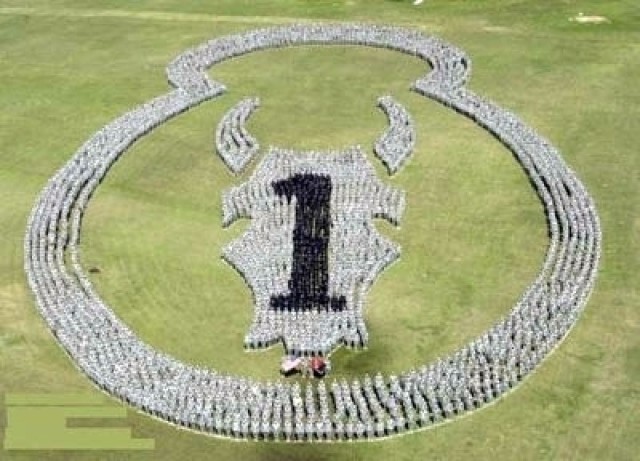
WASHINGTON (Army News Service, Jan. 12, 2007) - At least 4,000 National Guard Soldiers may spend an extra four months in Iraq as part of President Bush's troop increase announced Wednesday.
The Minnesota Army National Guard's 1st Brigade Combat Team, 34th Infantry Division, will have its Iraq tour extended through August, up to 125 days, the Defense Department announced yesterday.
The announcement affects about 3,000 Minnesota Guard members and more than 1,000 Guard members from Arizona, Georgia, Iowa, Kentucky, North Carolina, Nebraska and other states who are deployed with the 1st Brigade. In all, about 4,000 Guard members are affected, according to Minnesota National Guard Public Affairs Officer Lt. Col. Kevin Olson.
"The 1st Brigade, which consists of the Minnesota National Guard and a number of other National Guard units, were selected because of their agility and their ability to get the job done right," Olson said. "Our citizen-Soldiers are perfectly magnificent."
The 1st Brigade represents a fraction of the more than 25,000 National Guard members in Iraq, National Guard Bureau officials said.
The Pentagon announcement of the 1st Brigade's extension came one day after President Bush announced to the nation that he had committed more than 20,000 additional American troops to Iraq, most of them to Baghdad.
"We acknowledge that it is a sacrifice for our families and places a great deal of burden on them," Olson said.
The Minnesota National Guard is reaching out aggressively to support affected families, he said. Those efforts include military family-life consultants working with struggling families and a full-time mental-health coordinator who Olson said is energizing mental-health providers across the state to support deployed Guard members' families.
National Guard Bureau Chief Lt. Gen. H Steven Blum told The Hill, the newspaper of Congress, that Guard members would be ready to serve if called upon to support the president's new strategy. "If the nation needs us, we will do it," Blum said.
The National Guard has responded to every call for forces since Sept. 11, 2001, with more than 200,000 citizen-Soldiers and airmen already mobilized for operations Iraqi Freedom and Enduring Freedom.
"The Guard and reserve have been wonderful in the way that they've performed their assignments," Marine Gen. Peter Pace, chairman of the Joint Chiefs of Staff, said at the White House today.
Defense Secretary Robert M. Gates said today the increase in military forces will be phased in. "It will not unfold overnight. There will be no 'D-Day.' It won't look like the Gulf War."
The 1st Brigade was sent to Iraq in March in Minnesota's largest deployment since World War II. The brigade's theater-immersion training began in fall 2005, and the unit was scheduled to serve in Iraq for one year.
Since the terrorist attacks of Sept. 11, 2001, the National Guard has been engaged in operations around the world, serving on the ground in Bosnia, Kosovo, the Sinai, the Horn of Africa, and Guantanamo Bay, Cuba, among other places.
Simultaneously, the National Guard has continued its homeland mission, fighting fires, responding to winter storm rescue and other missions to support the nation's governors. In early 2005, more than half the combat power in Iraq came from the National Guard. The same year, more than 50,000 Guard members from all 54 states and territories made history with their response to Hurricane Katrina.

Social Sharing